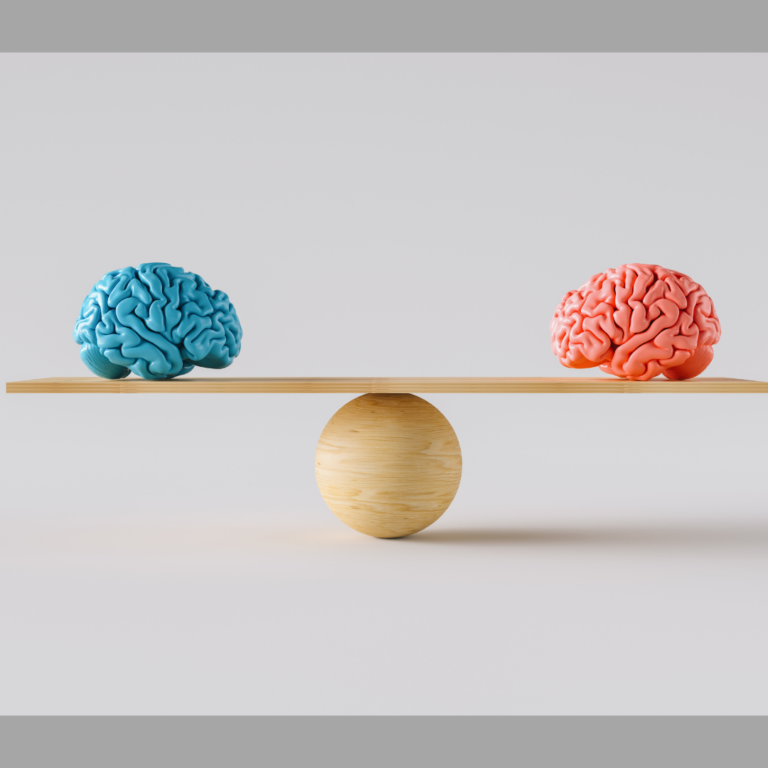Anchoring Bias: Definition and Examples
The anchoring bias is a type of heuristic that causes people to use the first they learn as a reference point for making future judgments and decisions. This anchoring effect is highly prevalent across a wide range of situations–and it’s also very difficult to overcome. In this article, learn more about what causes the anchoring…

The anchoring bias is a type of heuristic that causes people to use the first they learn as a reference point for making future judgments and decisions. This anchoring effect is highly prevalent across a wide range of situations–and it’s also very difficult to overcome.
In this article, learn more about what causes the anchoring bias and how it can impact your choices. Also, explore some strategies you can use to avoid the anchoring bias to make more accurate decisions.

What Is the Anchoring Bias?
The anchoring bias is a cognitive bias that causes people to rely too much on the first piece of information they learn.
That information is an anchor or reference point from which all other judgments or decisions are formed. This bias can lead to poor decisions and skewed judgments that are inaccurate or don’t fully account for subsequent information.
This phenomenon was first described by the researchers Amos Tversky and Daniel Kahneman. In one early study, participants were asked to compute the product of a long list of numbers in a very short amount of time. Because there was no time to do the actual calculations, people would base their subsequent guesses on their first few calculations. Their later answers were influenced by whatever those initial anchor points were.
The researchers even found that completely arbitrary, unrelated information could act as an anchor for future choices. In another variation of their research, participants watched a roulette wheel that would stop on either number 10 or number 65. After watching this, people were asked to guess the percentage of African nations members of the United Nations.
When the roulette wheel had stopped at 10, the average guess on the U.N. question was 25%. But when the roulette wheel stopped at 65, the average guess was 45%.
What Causes the Anchoring Bias?
Everyone is susceptible to anchoring bias. The effect has been demonstrated in a wide variety of settings and situations.
Research has found that people can easily become anchored to arbitrary points of information, even if the initial anchor is not relevant to the current situation.
The exact reasons this happens aren’t entirely clear, but researchers have proposed a few different explanations.
The Anchor-and-Adjustment Hypothesis
According to this theory, people often come up with initial anchor points on their own, often based on their own best guess, and then attempt to adjust from there. The problem is that the subsequent adjustments simply aren’t large enough, leading to inaccurate or poor judgments.
This theory explains how anchors are formed when people come up with them on their own. However, another explanation is needed to explain why this effect happens when an outside source provides the initial information.
The Selective Accessibility Hypothesis
Priming can also play a significant role in the anchoring effect. When people are exposed to a stimulus, the information about that stimulus remains activated in memory for a time. Because of this, that information is more readily accessible in their memory, even if they are not actively thinking about that information at the time.
Factors that Influence the Anchoring Effect
There are a number of factors that can make the anchoring effect more likely to occur. Some of these include:
- Cognitive ability: Some studies have suggested that people with greater cognitive ability are less influenced by the anchoring effect, but other studies have found no impact of cognitive abilities.
- Expertise: People who have knowledge, expertise, or experience in a certain area are less likely to be affected by anchoring effects. However, being experienced and knowledgeable doesn’t erase the effect entirely.
- Mood: Research has suggested that mood can impact how heavily people are influenced by anchor points. However, this research is mixed. Earlier studies indicated that negative moods were linked to a lower reliance on anchoring information, while more recent studies have suggested the opposite.
- Overconfidence: People often tend to overestimate the accuracy of their own judgments, which can lead to overconfidence. This can be particularly true if people believe they have strong cognitive abilities or decision-making skills.
- Personality: Certain personality dimensions on the Big Five personality model have been linked to an increased susceptibility to using anchor points when making choices. People who are high in extroversion are less likely to be influenced by anchoring, while people who are high in agreeableness, conscientiousness, and openness to experience are more likely to be influenced by the first information they encounter.
What Are the Effects of the Anchoring Bias?
The anchoring bias can affect the types of decisions you make in your everyday life. Some examples include:
Criminal Sentencing
Researchers have also found that initial anchor points proposed by an attorney or probation officer can play a role in determining the actual final sentence given by a judge.
In one study looking at hypothetical sentencing situations, judges were more likely to give a significantly longer sentence when the case prosecutor initially requested a longer sentence. When a shorter sentence was originally suggested, the judges were more likely to give a much shorter sentence.
Health Decisions
Research has shown that healthcare providers often give greater weight to their initial impression of a person’s symptoms than they do subsequent information that they learn that might influence their diagnosis and treatment. This can have an effect on the effectiveness of the care that a person receives and the outcome of their treatment.
Purchasing Decisions
An anchor point can impact how much you are willing to pay for an item. If you form an initial anchor point that tells you that a new laptop will cost you around $1,000, you might jump at the opportunity to buy one for $950.
Because you are basing your decisions on that original $1,000 number, you might not shop around enough to realize that there are similar laptops available for hundreds of dollars less.
Salary Negotiations
Imagine that you are discussing the possibility of a pay raise with your employer. They make an initial offer, and you negotiate it up slightly from that. Instead of looking at what other employers are paying or what other people in similar positions in your field are earning, you base your negotiation decisions on that initial number that your employer suggested.
How to Avoid the Anchoring Bias
Unfortunately, researchers have also found that the anchoring bias can be very difficult to avoid.
Researchers have even found that when people are made explicitly aware of the effect, they are still often unable to avoid it in order to adjust their judgments from the initial anchor point.
Avoiding the anchoring bias altogether isn’t likely, but there are steps that you can take to help minimize its effects and make more accurate decisions.
- Be aware of the effect: While understanding the anchoring effect and even consciously trying to avoid it doesn’t necessarily work, it can help you come up with other strategies that may help.
- Argue against your anchor: When you have an initial anchor point in mind, spend some time consciously coming up with arguments for why it might not be accurate or the best choice.
- Consider other options: No matter what your anchor point is, considering your other options may help aid in better choices. If possible, ask for input from other people who might not be as affected by your initial anchor point.
The Bottom Line
The anchoring bias is a type of cognitive bias in which people give too much importance to the first piece of information they learn. It is highly prevalent and can even be affected by completely arbitrary, unrelated information. It can also lead to poor judgments, but research suggests that it is difficult to overcome.
Sources:
Biases in judgmental adjustments of statistical forecasts: The role of individual differences. (2010). International Journal of Forecasting, 26(1), 116–133. https://doi.org/10.1016/j.ijforecast.2009.02.005
Englich, B., & Soder, K. (2009). Moody experts—How mood and expertise influence judgmental anchoring. Judgment and Decision Making, 4(1), 41–50.
Enough, B., & Mussweiler, T. (2001). Sentencing under uncertainty: Anchoring effects in the courtroom1. Journal of Applied Social Psychology, 31(7), 1535–1551. https://doi.org/10.1111/j.1559-1816.2001.tb02687.x
Saposnik, G., Redelmeier, D., Ruff, C. C., & Tobler, P. N. (2016). Cognitive biases associated with medical decisions: A systematic review. BMC Medical Informatics and Decision Making, 16(1), 138. https://doi.org/10.1186/s12911-016-0377-1
Simmons, J. P., LeBoeuf, R. A., & Nelson, L. D. (2010). The effect of accuracy motivation on anchoring and adjustment: Do people adjust from provided anchors? Journal of Personality and Social Psychology, 99(6), 917–932. https://doi.org/10.1037/a0021540
Thorsteinson, T. J. (2011). Initiating salary discussions with an extreme request: Anchoring effects on initial salary offers1: anchoring and salary. Journal of Applied Social Psychology, 41(7), 1774–1792. https://doi.org/10.1111/j.1559-1816.2011.00779.x
Tversky, A., & Kahneman, D. (1974). Judgment under Uncertainty: Heuristics and Biases: Biases in judgments reveal some heuristics of thinking under uncertainty. Science, 185(4157), 1124–1131. https://doi.org/10.1126/science.185.4157.1124
Wilson, T. D., Houston, C. E., Etling, K. M., & Brekke, N. (1996). A new look at anchoring effects: Basic anchoring and its antecedents. Journal of Experimental Psychology: General, 125(4), 387–402. https://doi.org/10.1037/0096-3445.125.4.387





